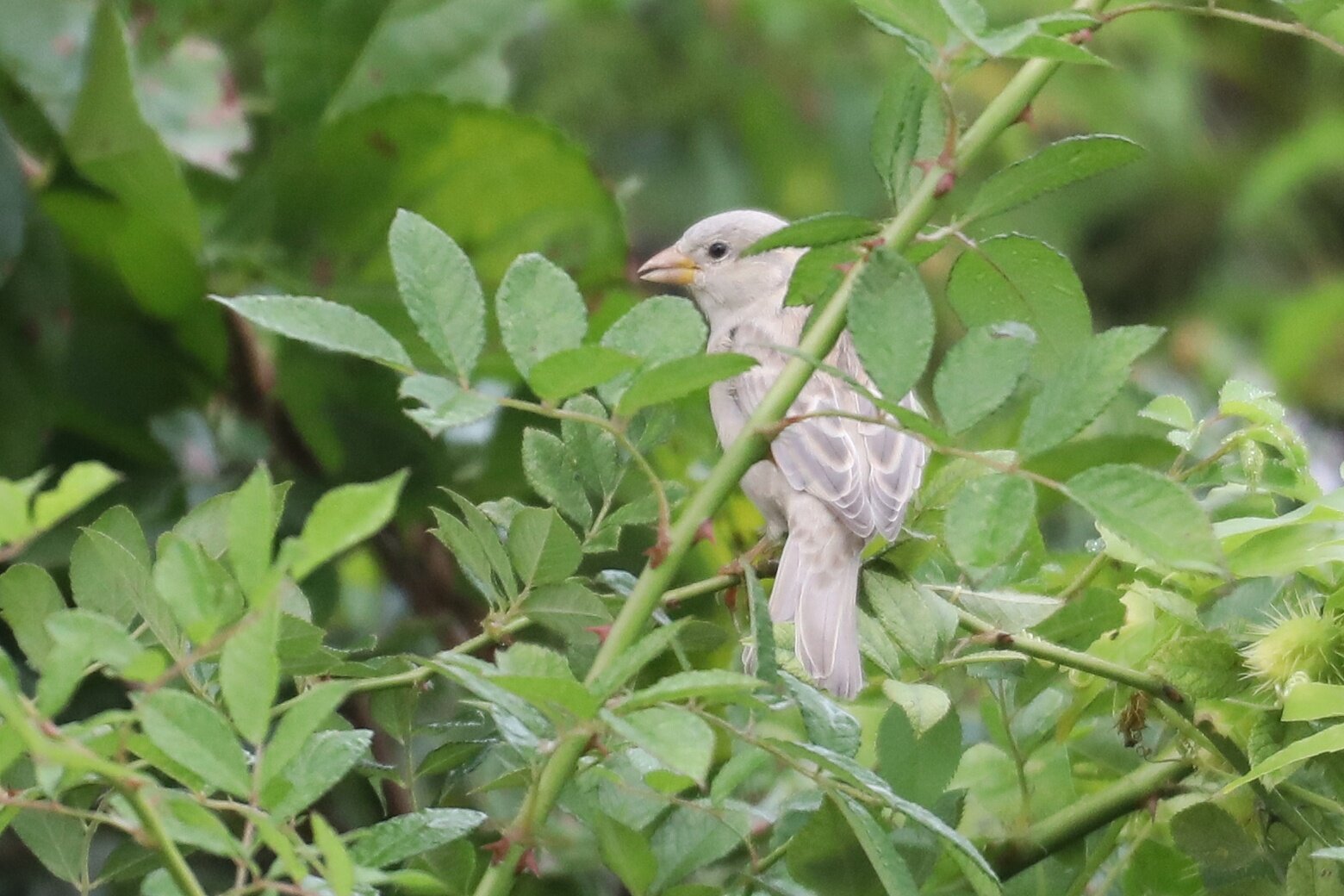by Marion Sprague
We had a wonderful time exploring Gilsland Farm on Sept 18th with 5 of the MYBC young birders. Gilsland Farm is 65-acre sanctuary in with more than two miles of trails winding along a pond and through forest, meadow, orchard, and salt marsh situated along the Presumpscot River estuary in Falmouth.
We met at the parking lot near the Audubon Nature Store and birded around the nature center working our way toward the pond. At the top of the hill we hit a good pocket of fall migrants including an American Redstart, an Eastern Phoebe, a Blackpoll Warbler, and a Black-and-White Warbler. We also had a Red-bellied Woodpecker calling.
At the pond we were surprised by a Belted Kingfisher that flushed as we approached. We also added a few frogs to our non-avian species list before continuing our way to the top of the hill toward the Community Garden. This is where the morning got interesting. While looking for Dickcissels in a flock of House Sparrows we noticed a lighter colored bird, hoping it was something interesting we spent some time watching the flock. Alas, it turned out to be a very pale female House Sparrow—possibly with some sort of color aberration in her feathers.
Not a group to have our hopes easily dashed that we would find something fun, we continued our trip to the garden where we spotted a CLAY-COLORED SPARROW feeding with a flock of American Goldfinches. We took our time with this bird and were rewarded when it popped up out in the open on a patch of tansy only 10 feet from us. The camera shutters went wild! Then a MERLIN landed in the tree tops! But the excitement didn’t stop there…
The North Meadow was also full of activity. Weston heard what he thought was a Marsh Wren, but it turned out to be 4 MARSH WRENS!! We all got great looks at these often hard to see birds. While we were paused to enjoy the wrens we had a flyover of a Norther Harrier. What a day!
We also faced a more somber but very important lesson for nature enthusiasts—getting out into nature means you may encounter a creature in distress at some point. It can be very hard to witness. Our group encountered a groundhog behaving oddly, having trouble keeping its balance and unafraid of humans. We talked about how in those instances it is best not to approach sick wildlife, but that knowing the right people to contact is an important tool for all nature enthusiasts. Maine Department of Inland Fisheries & Wildlife has a great webpage that lists the wildlife rehabilitators across the state. Because wildlife requires special care it is best to leave caring for injured or sick wildlife to professionals. We reported the groundhog to Maine Audubon. It turned out they had been aware of this individual and the biologist studying the groundhogs on the farm had some working theories on the cause. As hard as it was to move on, we did our part to ensure both the safety of our group and the groundhog.
We wrapped up the adventure will a stroll through the woods and marsh overlooks, where we picked up a Swainson’s Thrush. We capped off an very interesting outing with a visit to a spectacular flush of Chicken of the Woods (Laetiporus sulphureus) mushrooms on a fallen hardwood tree. While not a bird it is named after a bird.
All-in-all it was a great outing. We saw 43 species throughout the morning. Check out the full checklist of what we saw here: https://ebird.org/me/checklist/S95597751
See you at the October Mt. A and Center for Wildlife outing! Happy Birding.














